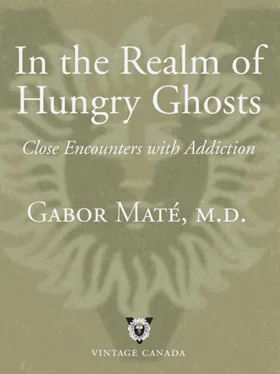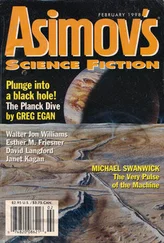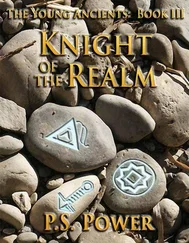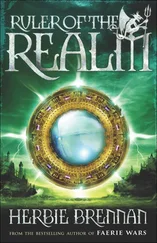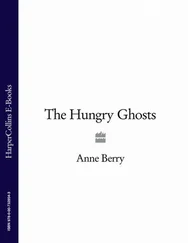6. Ibid, 25.
7. Saul Bellow, The Adventures of Augie March (New York: Penguin Books, 1996), 1.
8. Peter Gay, Freud: A Life for Our Time (New York: W.W. Norton, 1998), 44.
CHAPTER 8 THERE’S GOT TO BE SOME LIGHT
1. Carl Rogers, On Becoming a Person: A Therapist’s View of Psychotherapy (New York: Houghton Mifflin, 1995), 283.
CHAPTER 9 TAKES ONE TO KNOW ONE
1. Sakyong Mipham, Turning the Mind into an Ally (New York: Riverhead Books, 2003), 14.
2. Daniel Barenboim, A Life in Music (New York: Scribner’s, 1991), 58.
3. Everett Fox, trans., The Five Books of Moses (New York: Shocken Books, 1995).
CHAPTER 11 WHAT IS ADDICTION?
1. D.K. Hall-Flavin and V.E. Hofmann, “Stimulants, Sedatives and Opiates,” in Neurological Therapeutics, vol. 2, ed. J.H. Noseworthy (London and New York: Martin Dunitz, 2003), 1510–18.
2. N.S. Miller and M.S. Gold, “A Hypothesis for a Common Neurochemical Basis for Alcohol and Drug Disorders,” Psychiatric Clinics of North America 16(1) (1993): 105–17.
3. F. Noble and B.P. Roques, “Inhibitors of Enkephalin Catabolism,” chap. 5 in Molecular Biology of Drug Addiction (Totowa, NJ: Human Press, 2003), 61.
4. M.A. Bozarth and R.A. Wise, “Anatomically Distinct Opiate Receptor Fields Mediate Reward and Physical Dependence,” Science, 4 May 1984, 516–17.
5. “Recovering Church: The 2005 Greenfield Lectures,” St John the Baptist Episcopal Church, Portland, Oregon; http://www.st-john-the-baptist.org/Greenfield_lectures.htm.
CHAPTER 12 FROM VIETNAM TO “RAT PARK”
1. G.M. Aronoff, “Opioids in Chronic Pain Management: Is There a Significant Risk of Addiction?” Current Review of Pain 4(2) (2000): 112–21.
2. A.D. Furlan, “Opioids for Chronic Noncancer Pain: A Meta-analysis of Effectiveness and Side Effects,” CMAJ 174(11) (23 May 2006): 1589–94.
3. S.R. Ytterberg et al., “Codeine and Oxycodone Use in Patients with Chronic Rheumatic Disease Pain,” Arthritis and Rheumatism 14(9) (September 1998): 1603–12.
4. L. Dodes, The Heart of Addiction (New York: HarperCollins, 2002), 73.
5. L. Robins et al., “Narcotic Use in Southeast Asia and Afterward,” Archives of General Psychiatry 23 (1975): 955–61.
6. A.J.C. Warner and B.C. Kessler, “Comparative Epidemiology of Dependence on Tobacco, Alcohol, Controlled Substances, and Inhalants: Basic Findings from the National Comorbidity Survey,” Experimental and Clinical Psychopharmacology 2 (1994): 244–68.
7. B. Alexander, “The Myth of Drug-Induced Addiction: Report to the Canadian Senate,” January 2001; http://www.parl.gc.ca/37/1/parlbus/commbus/senate/come/ille-e/presentation-e/alexender-e.htm.
8. Robins et al., “Narcotic Use in Southeast Asia,” 955–61.
9. Peter McKnight, “The Meth Myth: Hooked on Hysteria, the Media Are Big on Anecdote and Short on Science in Dealing with the Latest ‘Most Dangerous Drug,’” The Vancouver Sun, 25 September 2005, C5.
10. D. Morgan et al., “Social Dominance in Monkeys: Dopamine D2 Receptors and Cocaine Self-administration,” Neuroscience 5(2) (2005): 169–74.
11. Alexander, “The Myth of Drug-Induced Addiction.”
12. B. Alexander et al., “Effects of Early and Later Colony Housing on Oral Ingestion of Morphine in Rats,” Psychopharmacology Biochemistry and Behavior 58 (1981): 175–79.
13. J. Panksepp et al., “Endogenous Opioids and Social Behavior,” Neuroscience and Biobehavioral Reviews 4 (1980): 473–87.
14. L.N. Robins, “The Vietnam Drug User Returns,” in Special Action Office Monograph Series A (No. 2) (Washington, DC: U.S. Government Printing Office).
CHAPTER 13 A DIFFERENT STATE OF THE BRAIN
1. Robert L. Dupont, The Selfish Brain: Learning from Addiction (Center City, MN: Hazelden, 2000), xxii.
2. C.P. O’Brien, “Research Advances in the Understanding and Treatment of Addiction,” The American Journal on Addiction 12(836–847) (2003).
3. G. Bartzokis et al., “Brain Maturation May Be Arrested in Chronic Cocaine Addicts,” Biological Psychiatry 5(8) (April 2002): 605–11
4. R.Z. Goldstein and N.D. Volkow, “Drug Addiction and Its Underlying Neurobiological Basis: Neuroimaging Evidence for the Involvement of the Frontal Cortex,” American Journal of Psychiatry 159 (2002): 1642–52.
5. Charles A. Dackis, “Recent Advances in the Pharmacotherapy of Cocaine Dependence,” Current Psychiatry Reports 6 (2004): 323–31.
6. T.E. Robinson and B. Kolb, “Structural Plasticity Associated with Exposure to Drugs of Abuse,” Neuropharmacology 27 (2004): 33–56.
7. M.A. Nader et al., “PET Imaging of Dopamine D2 Receptors during Chronic Cocaine Self-administration in Monkeys,” Nature Neuroscience 8 (9 August 2006).
8. N.D. Volkow et al., “Relationship between Subjective Effects of Cocaine and Dopamine Transporter Occupancy,” Nature 386(6627) (April 1997): 827–30.
9. G.F. Koob, “Drugs of Abuse: Anatomy, Pharmacology and Function of Reward Pathways,” Trends in Pharmacological Science 13(5) (May 1992): 177–84.
10. Dr. Richard Rawson, Associate Director of the Integrated Substance Abuse Program, University of California at Los Angeles, Teleconference, 26 April 2006. Available from U.S. Consulate, Vancouver, BC.
11. P.W. Kalivas, “Recent Understanding in the Mechanisms of Addiction,” Current Psychiatry Reports 6 (2004): 347–51.
CHAPTER 14 THROUGH A NEEDLE, A WARM SOFT HUG
1. J. Panksepp et al., “The Role of Brain Emotional Systems in Addictions: A Neuro-evolutionary Perspective and New ‘Self-Report’ Animal Model,” Addiction 97 (2002): 459–69.
2. B. Kieffer and F. Simonin, “Molecular Mechanisms of Opioid Dependence by Using Knockout Mice,” in Molecular Biology of Drug Addiction, ed. R. Moldano (Totowa, NJ: Human Press, 2003), 12.
3. Thomas De Quincey, Confessions of an English Opium Eater (Ware, Hertfordshire: Wordsworth Classics, 1994), 143 and 146.
4. A. Moles, “Deficit in Attachment Behavior in Mice Lacking the Mu-opioid Receptor Gene,” Science, 25 June 2004, 1983–86.
5. Panksepp et al., “The Role of Brain Emotional Systems,” 459–69.
6. J.-K. Zubieta, “Regulation of Human Affective Responses by Anterior Cingulate and Limbic µ-Opioid Neurotransmission,” Archives of General Psychiatry 60(2003): 1145–53.
7. J.K. Zubieta et al., “Placebo Effects Mediated by Endogenous Opioid Activity on Mu-opioid Receptors,” Journal of Neuroscience 25(34) (24 August 2005): 7754–62.
8. J. Panksepp, Affective Neuroscience: The Foundations of Human and Animal Emotions (New York: Oxford University Press, 1998), 250.
9. Ibid, 256.
10. A.N. Schore, Affect Regulation and the Origin of the Self (Hillsdale, NJ: Lawrence Erlbaum Associates, 1994), 142–43.
11. N.I. Eisenberger, “Does Rejection Hurt? An FMRI Study of Social Exclusion, Science, 10 October 2003, 290–92
12. Schore, Affect Regulation, 378.
13. J. Hennig et al., “Biopsychological Changes after Bungee Jumping: Beta-Endorphin Immunoreactivity as a Mediator of Euphoria?” Neuropsychobiology 29(1) (1994): 28–32.
14. B. Bencherif et al., “Mu-opioid Receptor Binding Measured by [11C]carfentanil Positron Emission Tomography Is Related to Craving and Mood in Alcohol Dependence,” Biological Psychiatry 55(3) (1 February 2004): 255–62.
15. D.A. Gorelick et al., “Imaging Brain Mu-opioid Receptors in Abstinent Cocaine Users: Time Course and Relation to Cocaine Craving,” Biological Psychiatry 57(12) (15 June 2005): 1573–82.
Читать дальше
